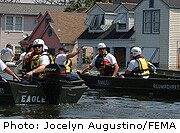
FRIDAY, June 22 (HealthDay News) — Two specific strains of bacteria that appear linked to indoor mold caused by water damage have been identified by researchers.
Bacterial contamination in water-damaged buildings can cause health problems such as infection and respiratory conditions such as asthma. But until now, no specific bacteria that contribute to these problems have been pinpointed, making it difficult for public health officials to find ways to tackle the problem.
In a new study, University of Cincinnati researchers found evidence linking two types of bacteria — Stenotrophomonas and Mycobacterium — to indoor mold from water damage.
The team made their findings after analyzing samples collected from 42 homes participating in the Cincinnati Childhood Allergy and Air Pollution Study, a federal government-funded project examining the long-term effects of environmental exposures on children’s respiratory health and allergy development.
The study was presented Monday at the American Society for Microbiology meeting in San Francisco.
“If we are going to understand the role of indoor bacteria in human health, we must be able to identify and quantify the relevant bacterial species contributing to the health problems,” principal investigator Atin Adhikari, an assistant professor of environmental health at the UC College of Medicine, said in a university news release.
“The association between bacterial contamination and respiratory health has lagged behind mold studies because it is difficult to determine which species of bacteria are growing in homes, and most of the bacterial species are non-culturable and not identified yet,” Adhikari explained.
“These new data will help us more accurately target and combat the bacteria and to explore synergistic health effects of bacteria and molds growing in water damaged homes,” he said.
Data and conclusions presented at medical meetings should be considered preliminary until published in a peer-reviewed medical journal.
More information
The U.S. Environmental Protection Agency has more about moisture and mold in your home.

